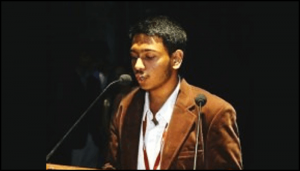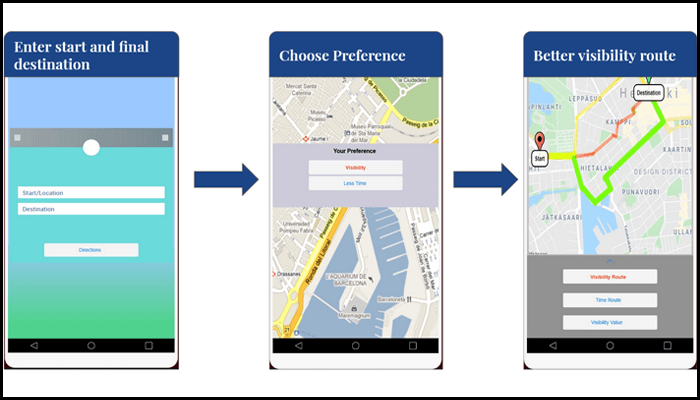In a global event conducted jointly by the University of Helsinki and Slush to tackle the growing urban air pollution crisis, a IIITH team of students made the jury’s cut and featured among the 8 shortlisted teams.
It is a fact well-known that the quality of air we breathe has significant effects on our health and the environment. According to the World Health Organization, 9 out of 10 people breathe air that exceeds safe limits, and this unsafe air quality can particularly be found in cities in low-to-middle income countries. In a bid to come up with solutions to monitor, predict and improve air quality, particularly in megacities, the University of Helsinki and Slush conducted a virtual hackathon titled ‘Venture With Air’.
The challenge involved designing of solutions with the help of unique outdoor and indoor air quality datasets from across the city of Helsinki as well as early adopters wearing MegaSense sensors within a major Finnish mall. The organizers invited participants to come up with answers to questions such as how to make cities more liveable through tracking and presenting street-corner air quality data, how local businesses can use real-time air quality data to serve their clients better and so on.
IIITH Team
A team of students from IIITH under the supervision of Dr. Sachin Chaudhari created an application to address environmental visibility. According to the team comprising of Rajashekar Reddy Chinthalapani, Jayati Narang, Siddharth De and Sara Spanddhana, while various parameters of air quality are monitored and discussed, conditions of poor visibility are never updated to the general public. They decided to focus on this aspect because as humans, we are more sensitive psychologically and physiologically to visual input. Plus, pollution in terms of poor visibility is there for everyone to see.




Haze-Ard
”Low visibility caused by air pollution is one of the major causes of traffic accidents,” says Rajasekar, adding, “Our main objective was to propose a solution based on the deployed air pollution sensor network with the potential to simultaneously save lives and can be commercialized”. Titled ‘Haze-Ard’, the solution aims to predict visibility values in kilometre on a specified path or at a specified place by using data from the air pollution sensor network deployed in Finland and the data generated using FMI SILAM model.
The competition saw entries from 12 different countries across 4 continents, with only 8 submissions making it to a shortlist. Impressed by the scope of solutions offered by the teams, Jari Strandman, CEO of Helsinki Innovation Services said, “All of the shortlisted works were of very high quality.” According to one of the jury members, Maija Palmer, “The (Haze-Ard) innovation focused on one particular aspect of air quality which has real consequences for people. It feels a bit niche because this is a solution for megacities only, but in those cities, it has the potential to save lives.”
As a fourth year Dual Degree student, Rajashekar’s research under Dr. Sachin Chaudhari focuses mainly on air pollution monitoring in the city of Hyderabad ( https://spcrc.iiit.ac.in/air/). Since the hackathon was based on data collected from similar nodes in Finland, he was motivated to participate in the competition. “Air pollution is one of the biggest challenges of modern times and more so in the COVID-19 times. There are a couple of ambitious projects on air pollution at IIITH in the Smart City context. So it is great to see our students participating in an international hackathon conducted by Helsinki University, Finland on this topic and securing a place in the top 8 positions,” says Dr. Chaudhari. As for the next steps, Rajashekar says, “We haven’t exactly thought of our future plans but I expect our experience through the whole process would help us in our future research problems.”

Sarita Chebbi is a compulsive early riser. Devourer of all news. Kettlebell enthusiast. Nit-picker of the written word especially when it’s not her own.


Next post